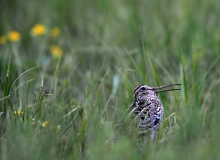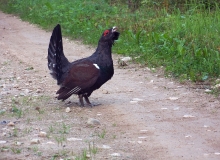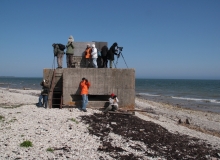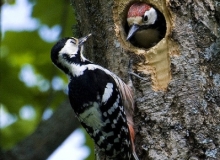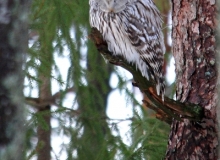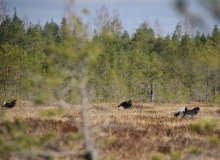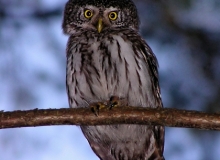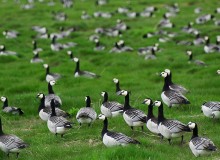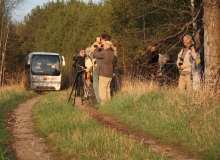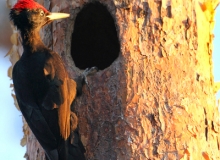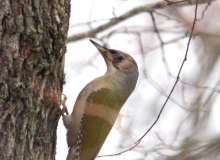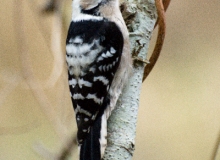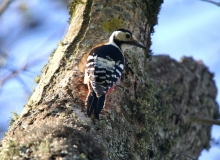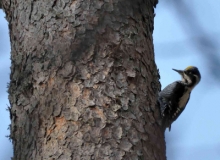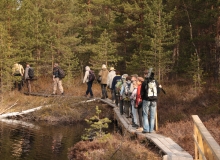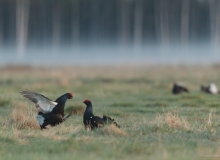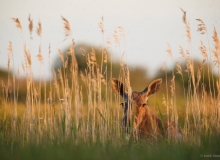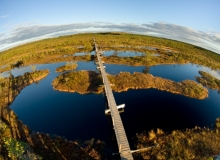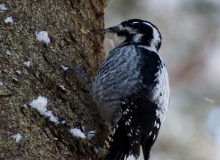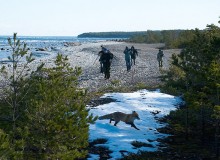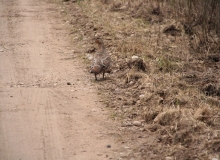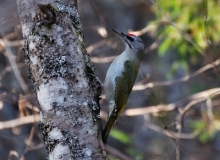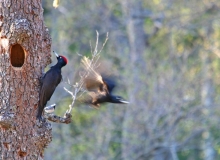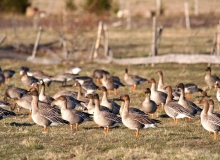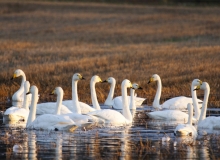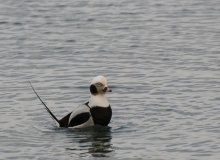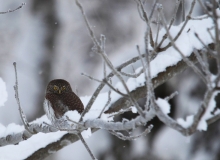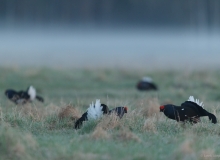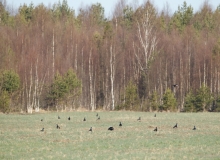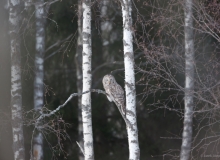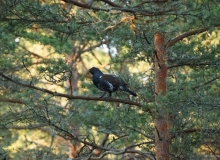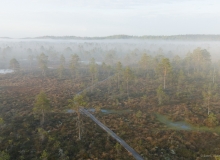Self- guided birding tours with smart device are available tailor made as well as tour packages. For tailor made tour please contact us, for tour packages read from menu Self-guided Tours.
What is the self-guided tours with smart device?
This tour takes you to the best birding places in Estonia and helps you to find target species. But instead of usual guide you have a Smart Device (tablet PC or smart phone) with a geo-location, detailed instructions and internet connection. Smart device based birding tour package is easy to use, no previous experience is needed. This tour is especially suitable for birders who prefer to go birding with their own team and pay less for guiding.
Why to go birding with smart device?
The tour description is composed by Rein Kuresoo, who has guided the birding tours in Estonia since 1988. Rein has been guiding groups of various well-known tourist companies like Naturetrek (GB), KNNV (Holland), Birdingtours, Nationalparktours, Studiosus-Reisen (Germany) and DOF-Travel (Denmark). In additional we have some keen birders in our team, they enjoy to find particular species like owls and woodpeckers. Smart Device Birding Tour connects our experience and knowledge. Besides, there are two important advantage:
- flexibility – you have all necessary information and you can always decide yourself , where and when to go;
- favorable price – professional birding guide is quite expensive, but here you have knowledge of several guides.
When?
The best month for bird-watching in Estonia is May, with exciting sights of migrating waterfowl earlier in month and arrival of eastern passerines in the end of the month. First half of April is the best time to come Estonia to see both the Steller’s Eider and also observe the activities of owls, woodpeckers and grouses. Birding in Estonia can also be quite exciting in September and most of October with nice migration.
How?
1. Buying the whole service We will compose the tour according to your target species and the time you spend in Estonia. This self- guided tour is based on tour description you will find on tab “Detailed description”. We:
- book the hotels,
- book a rental car,
- meet you in Tallinn airport,
- provide you with Samsung Calaxy tab with tour inside,
- provide you with the best road atlas of Estonia (Regio) and
- provide you with printed tour description.
2. Buying the know-how only. If you want to plan your bird tour and make bookings by yourself, our tour description will be of great help. The self-guided tour description on tab “Detailed description” does not contain exact names and coordinates. By paying for the whole package or separate modules you will get ready-to-use self-guided tour description with coordinates and names ( x, y – are the coordinates, ___ name of the place, road- road number). Each destination (region) below is described as a separate module and can be bought and used separately.
Book a tour with Triin: info@natourest.ee or by phone: +372 55 55 87 55
The trip went very well. In all we saw or heard about 151 or maybe a couple more. A few mammals too. The self-guided map worked very well. We could put the co-ordinates straights into a sat-nav and it took us perfectly to the locations. White-backed woodpecker was hard, in the end 5 of us saw it, but two of the group were chasing a tawny owl then searching for a corncrake so missed it. We’re already thinking about next year, maybe an earlier one for Seller’s Eider and more woodpeckers/owls. Or late May for Great Snipe etc.
Tony
Tony and his group were in Estonia 8-12 th of May 2013
I managed to see a hawk owl near to Virtsu on a forest road. I was surprised at the scarcity of birds during our time in Estonia, I assume that it was due to winter weather. We manage to see Steller’s eiders ca 240 Uudenpanga bay, several groups of snow buntings and Great Grey shrikes, despite searching suitable areas no White backed, 3 toed woodpeckers, we did see Grey Headed and black though. We managed to see Hazel, Black grouse and Capercaille. On our drive back to Tallinn airport, we saw our only nutcrackers at the roadside along with several blackbirds presumably northbound migrants!
We enjoyed our visit and would like to return when the weather is a little kinder!
Andrew
Andrew was in Estonia at the end of March 2013
Having attended a lecture on Estonia at the Bird Fair a few years ago, we knew the country boasted a mouthwatering list of northern and eastern special birds. We did not want to be on an organised tour, but having never visited the country before needed some help in finding good sites to visit. David Gosney`s “Finding Birds in Estonia” we found to be a useful startpoint. The GPS provided by Natourest (www.natourest.ee) was preprogrammed with a lot more sites including specific places for scarce breeding birds like White-backed Woodpecker and Ural Owl. We are both technophobes, but after a little tuition and some practice, found the GPS system (TAB and Google Maps) relatively easy to use and of great value in getting to sites, that in some cases were off-road down forest tracks. We found Estonians to be very friendly, and most people speak English well. The road signage is good, and outside of Tallinn the roads are empty of traffic. We found the accommodation to be of a good standard and the food very tasty. There are a lot of National Parks and Reserves with a very good infrastructure of bird-towers, boardwalks and toilets. With a lot of wet forest, bogs and mires, there are also a lot of mosquitos, but regular application of deet, did keep the number of bites received down. Our holiday was very enjoyable, and we certainly hope to visit again.
Mike from England
Mike was in Estonia 1-11 th of June 2012
The maps are good for the overview, the big picture. But it was good you sent the text with the coordinates too, it was very useful. It’s much easier to use the gps this way, and the gps is needed, because the internet connection is not so good in some of the forests.
Mads from Denmark
Mads was in Estonia 23-30 th of March 2013
This is the self-guided birdwatching tour in Tallinn- in Paljassaare. Paljassaare is the closest birding area from Tallinn, just 20 minutes drive from city center. Guide is free to use. The same way our other self-guided tours are working.
You find more information about our other tours under the link- detailed description.
Book a tour with Triin: info@natourest.ee or by phone: +372 55 55 87 55
Key Species and highlights
Hotels
Eating
*** „A must“
** „Recommended“
* „Optional“
Parking place
Birding tower next the reed bed ***
***
May and June
**
September and October
Good view to ponds SW. Tufted Duck, Great Crested Grebe, Mute Swan, Red-necked Grebe, Black-headed Gull. In the reed Tits, Reed Bunting. Flying above the reed Eurasian Marsh Harrier.
Shallow sandy beach ***
***
May and June; End of August and September
Small path leading to the beach. In spring and summer -Ringed Plover, Little Plover, Common Redshank during the migration other species. On sea and on stones- Eurasian Oystercatcher, Common Shelduck, Goosander, Gadwall, Common Goldeneye, Red-breasted Merganser different gulls. In bushes Yellow Wagtail, Common Cuckoo In reedbed Grey Heron.
End of peninsula- near radar tower *
Reed bed **
When you walk on the paths trough red beed and bushes, you can hear and see different birds.
Great Reed Warbler, Sedge Warbler, Great Bittern
Stony beach **
Open sea **
**
January-April
*
May-June, September-October
Different open sea birds- Common Eider, Red-brested Merganser, Common Scoter. In winter flocks of Common Goldeneye and Long-tailed Duck.
View Paljassaare birdwatching in a larger map
Currently following destinations are available:
1. NW- ESTONIA: Haapsalu, Nõva, northern part of Matsalu National Park. Essential for watching the migration of Arctic waterfowl, good for many forest birds. – 2 (3) days
2. WESTERN ESTONIA: southern part of Matsalu National Park – Matsalu is the most famous birding site in Estonia. Hundreds of thousands of waterbirds use this areaon passage.
3. HÄÄDEMEESTE AREA in SW. – good for migrating and breeding sea- and shorebirds, very good for many forest birds.
4.TARTU AREA (inland, south-east of the country)– good for many forest birds (woodpeckers, owls, Lesser Spotted Eagles) essential for Great Snipe and Citrine Wagtail. – 2 (3) days
5. SAAREMAA ISLAND – a piqturesque big island with many natural habitats – good for migrating and breeding sea- and shorebirds. Essential for Steller’s Eider.
6. ALUTAGUSE N-E of ESTONIA– very good area for grouses- Hazel Hen, Capercaillie and Black Grouse also Brown Bear
View Self-guided birding tour with GPS in Estonia in a larger map
Book a tour with Triin: info@natourest.ee or by phone: +372 55 55 87 55
1. NW- ESTONIA – HAAPSALU, NÕVA, NORTHEN PART OF MATSALU NATIONAL PARK –
recommended stay 3 days.
Key Species and highlights
- Elk;
- Baltic Dunlin;
- Broad-billed Sandpiper, Sanderling and other migrating waders;
- Massive migration of arctic waterfowl;
- Slavonian Grebe;
- Golden Eagle;
- Ural, Tengmalm’s and Pygmy Owl;
- Capercaillie, Black and Hazel Grouse;
- White-backed, Three-toed, Black, Gray-headed and Lesser Spotted Woodpecker and Wryneck;
- Nutcracker;
- Trush Nightingale, Icterine Warbler, Blyth’s Reed Warbler, Savi’s Warbler, River Warbler, Grasshoper Warbler;
- A big number of rare vagrants seen every year.
Hotels
Baltic Hotel Promenaadi 58.95386,23.531942; http://www.promenaadi.ee/en; phone +372 473 7250 Offers nice sight to the birds at Tagalaht bay, White-tailed Eagles can be regularily seen.
Päeva Villa 58.946555,23.529282 http://www.paevavilla.ee/eng/index.php; phone +372 534 88222 .
Also Fra Mare Thalasso Spa 58.939625,23.517544 http://www.framare.ee/?go=indexHYPERLINK “http://www.framare.ee/?go=index&lang=eng”&HYPERLINK “http://www.framare.ee/?go=index&lang=eng”lang=eng; phone +372 472 4600 is situated outside the town and surrounded by nice habitats.
Kongo Hotel 58.945011,23.53368 http://www.kongohotel.ee/ Tel. (047) 24800
Outside of Haapsalu:
Roosta Holiday Village 59.159146,23.519497; http://www.roosta.ee/en; phone +372 525 6699 has cosy bungalows in a pine forest at the sea and a good restaurant. Sometimes it can be crowded and noisy.
Altmõisa Guesthouse www.altmoisa.ee at 58.815264, 23.55413; phone + 372 5300 8622 – very nice small hotel in a natural setting close to Matsalu national park.
Tuulingu Holiday house http://www.tuulingu.ee/pgs/eng/index.html; 58.779324,23.660367; phone +372 504 8950 A small holiday-house with self catering, situated in one of the best birding locations in Matsalu.
Eating
There are several restarants and cafes in Haapsalu:
Baltic Hotel Promenaadi 58.95386,23.531942 ; http://www.promenaadi.ee/en; phone +372 473 7250offers nice sight to the birds at Tagalaht bay, White-tailed Eagles can be regularily seen. When birding in northern part of the area, use the restaurant of Outside of Haapsalu:
Roosta Holiday Village 59.159146,23.519497; http://www.roosta.ee/en; phone +372 525 6699.
When visiting the northern part of Matsalu bay, you may visit Amanda puhvet 58.819186,24.056926; phone +372 50 79 377, +372 47 29 044.
*** „A must“
** „Recommended“
* „Optional“
1.1 Põõsaspea (Spithami) promontory: massive migration ***
***
March to end of May (spring migration) and end of July to November (autumn migration)
*
Summer and winter
A small parking area at the tip of promontory x, y , very close to the bird station and observation point. The cabin can be used as a shelter on windy/rainy days.
A most wide range of waterfowl and other migrating birds. Diving and dabbling ducks, geese and divers are most numerous migrating birds. Twitchers can expect Skuas and Loons, rarities are seen often.
The passerines and other terrestrial birds tend to gather on the headland both at open, forested and shrubby areas – you can leave your car on a roadside (e.g. x, y) and examine surroundings. Spithami is a old coastal Swedish village with the remnants from Soviet military base. Signs „eravaldus“ mean „private property“, avoid trespassing.
1.2 Port Dirhami: migration **
March to end of May (spring migration) and end of July to November (autumn migration)
*
Summer and winter Parking lot is at the port (x, y). The port is privately owned, but its facilities can be used for observation, you can also take a walk to point x, y . A most wide range of waterfowl and other migrating birds can be seen, incl. rarities. Diving and dabbling ducks, geese and divers are about most numerous. This spot is just a little bit less favourable for watching birds than ___, but changing the position can produce new species.
1.3 Forest road at Nõva landscape reserve: old pine forest **
March to mid-May Turn NE at x, y from ___ road. There is an observation tower at x, y. Lots of coastal lakes in forest can be accessed by foot only. There will be a crossing at x, y – road to the N leads to sandy beach and holiday area, road to the S leads to ___, from where you can proceed to 1.4.
Birds: Tengmalm’s Owl, Eagle Owl, Pygmy Owl. Capercaillies seen sometimes on the road, Hazel Grouse, Black Woodpecker, Parrot Crossbill (irregular), Nightjar.
1.4 Veskijärve and Tänavjärve lakes: burned area, lakes, peat-bog **
**
April – June
1. Leave your car at x,y. Use the sandhills for scanning sky for raptors. Sometimes even a Short- toed Eagle or Merlin can show up. In some years Tawny Pipit have been present in areas with exposed sand. Three-toed Woodpeckers, Black Grouse, Wood Lark Wryneck and Great Grey Shrike possible.
2. Drive on towards a small parking lot at x,y. Stop at the first lake ___ to check the lake for breeding Whooper Swans or Osprey. At the second lake (___) the chances to see Osprey are even bigger. Also the Black Grouse like young birch srhrubs in the burned area in peat bog.
1.5 Saare (Lyckholm) road: forest and peat-bog ***
***
Year round, different types of forest offer the biggest diversity of forest birds in this area.
Turn SE from Nõva-Riguldi road at ___ bus stop (x, y), you may drive until x, y if road permits (end part is soft in early spring – in this case stop at x, y). Make stops on the road in suitable habitats. ___ bog north of the road is a protected area.
Birds: Tengmalm’s Owl, Ural Owl, Pygmy Owl. Capercaillies seen sometimes on the road, Hazel and Black Grouse, Crane, Black, Gray, Three-toed and White-backed Woodpecker, Parrot Crossbill (irregular), Nightjar, Nutcracker, Red-breasted Flycatcher.
1.6 Haversi coast ***
***
May-June; July-October, migrating waders.
Turn W from ___ road at x, y, drive as close to the coast as possible (the road can be quite bad), leave the car preferably at x, y. Walk along the beachline to the south 400-600 m.
This is a preferable feeding site for migrating waders. It is possible to see a wide range of species, ___ is one of the most regular stopover sites for Broad-billed Sandpiper (occurring in end of May / beginning of June).
1.7 Saare (Lyckholm) manor and Sutlepa lagoon trail at Silma nature reserve ***
***
April-October
Stop at Saare (Lyckholm) manor at x, y. Here you can have coffee or even lunch (check with___) you can also ask about the condition of the nature trail. If it is not flooded, you can make a round at the lagoons and reed-bed by foot, leaving the car at the manor. Proceed by car or by foot to parking lot at x, y. The first bird-tower is very close at x, y and the second at x, y.
Try to hear and see the Penduline Tit between two towers. From the second tower proceed by the trail, turning into boardwalk in wet areas. In case of high water level the boardwalk can be flooded, in this case you have to return. If it is possible to proceed, the trail leads you back to ___ manor.
Thousands of waterfowl stop here at spring migration, eg Goldeneyes, Mute swans, Tufted Ducks, Pochards, Coots and many others. In April and May hundreds of Little Gulls and Black Terns can be seen flying above the lagoon. Bitterns,Water Rails and Bearded Tits can often be heard, on sunny days Hobbys catch dragonflies around the wetland. Rarities, such as Little Crake, Whiskered and White-winged Tern are seen regularily.
1.8 Saunja Bay at Silma nature reserve **
**
April-October
From Keila-Haapsalu road (road 17) turn NW at x, y and drive about 2 km to a small parking lot at x, y. Proceed to the bird-tower at x, y, check the birds at the bay on the way. The bay is good for swans and ducks on migration time. Smews can be present in impressive numbers. Usually many White-tailed Eagles can be seen.
1.9 Haapsalu - bays ***
***
Best on migration time.
Haapsalu town is situated at a large shallow bay, which is further divided into smaller bays. This town is very rich in birds. The older part of Haapsalu town is situated in a promontory stretching into Haapsalu Bay. This promontory divides the bay into Tagalaht (the Back Bay) and Eeslaht (the Front Bay). The promontory itself is split by two water bodies – Väike Viik and Suur Viik.
1.9.1 Eeslaht is a western waterfront of the town and can be approached from numerous sites, eg from x, y (this spot offers also a sight to ___).
1.9.2 ___ is a lagoon which hosts Slavonian Grebe and also often other interesting birds. You can see it from previous spot or take a look at it fom ___ at x,y.
1.9.3 Suur Viik is a small shallow bay behind the ___. Both coasts can be approached by streets running close to the shoreline. Avoid areas with sign „eravaldus“ (private property).
1.9.4 ___: There is an observation tower which overlooks the bay and reedbeds at x, y . The tower is prone to vibration and works better with still weather and smaller visitors load (eg early in the morning). Many species of waterfowl visit the bay and a lot of rare vagrants have been spotted here. Slavonian Grebe breeds on the lagoon.
1.10 Haapsalu sewage treatment plant **
**
April to October, reed-beds, shallow water habitats Sewage water treatment facility is situated at ___ bay at the edge of reed-beds. Leave your car at x, y. Move along the fence of the treatment plant. Penduline and Bearded Tit breed in the reeds and shrubs. Many other species, like Water Rail, Spotted Crake, Saviś and Reed Warbler, can be heard.
1.11 Puise port: coastal and seabirds **
** April – end of May, migration time.
Leave the car at the parking lot at x, y. To have a full access to this area and a private bird tower, call tel. no look for an owner – keep the language simple. You can order coffee or tea, or leave a donation.
Birds: Thousands of Barnacle Geese, Scaups, waders. Migrating vagrants halting before crossing the strait are spotted often.
1.12 Põgari coastal meadow, Matsalu National Park ***
***
March- beginning of June; Mid- July – September, migration time
** June – July, breeding time
Leave the car near cattle farm, at x,y.
Birds on the coastal meadows can be observed from elevated drive-in or roadside. Public access is denied to the coastal meadow. Birds to see: thousands of Barnacle Geese, flocks may contain rarities. This is one of the best spots for Estonia for migrating waders and a breding area of Baltic Dunlin.
1.13 Haeska coastal meadow, Matsalu National Park ***
*** March- beginning of June; Mid- July – September, migration time
** June – July, breeding time
Parking lot at x,y, bird tower at x,y. This tower offers usually unfavorable counter-light, but the greatest range of species in ___ – 128 different bird species has been recored here in 24-hour observation. In spring thousands of swans and geese can be seen, including sometimes Lesser White-fronted Geese. Also Swans, dabbling ducks and waders are numerous. Baltic Dunlins breed on the coastal meadows. Public access to the coastal meadow is denied.
1.14 Rannajõe tower, wet meadow **
**
March – November
Leave the car at x,y, the observation platform is at x,y . This wet meadow is usually not very rich in birds, but there are few specialities like Black Grouse (spring mornings) and raptors. Elk comes to open areas at every sunset. Public access to the meadow is denied.
1.15 Väike-Rõude manor park, alluvial meadow **
**
March – November
Turn SW from road 31 at x,y . This park is a cultural heritage site and public access is granted, but there is no public access to the meadow. Leave the car at x, y . The owner of the house does not speak English, but is friendly to the visitors. The path to SW leads to an hill with an unofficial observation platform at x, y , be careful using it – the boards can be lose . White-backed Woodpecker can be sometimes seen flying from the park to the willows in the floodplain. Other breeders in the park: Icterine Warbler, Wryneck, Trush Nightingale, Nutcracker, sometimes Blyth’s Reed Warbler.
1.16 Suure-Rõude manor park, alluvial meadow *
*
March – November
Turn SW from road 31 at x,y. Leave the car at the private plot x,y (ask for permission, if anybody home, if not, just park in this friendly territory). You might hear Wryneck or Lesser Spotted Woodpecker from this point. The edge of a clearing is another spot to look for White-backed Woodpecker. It can be sometimes seen flying from the park to the willows in the floodplain – You may walk to the point x, y . Public access to the meadow is denied. Waiting on an edge can reveal some raptors – e.g Lesser Spotted Eagles.
1.17 Suure-Rõude fields *
*
May– September
Target species: Ortolan Bunting
Turn NE from road 31 at x, y. Drive to x,y – x,y – x, y Look for Ortolan Bunting sitting on electric wires or poles.
2. WESTERN ESTONIA, SOUTHERN PART OF MATSALU NATIONAL PARK – recommended stay 1,5 days
Key Species and highlights
- Elk;
- Baltic Dunlin;
- Massive migration of arctic waterfowl;
- Black and Hazel Grouse;
- White-backed, Black, Gray-headed and Lesser Spotted Woodpecker and Wryneck;
- Nutcracker;
- Trush Nightingale, Icterine Warbler, Blyth’s Reed Warbler, Savi’s Warbler, River Warbler, Grasshoper Warbler;
Hotels
Pivarootsi Manor http://www.pivarootsimois.ee/ 58.551441,23.598762; phone +372 67 90888, +372 50 92 050
Pivarootsi Tuulik http://www.pivarootsi.ee/ 58.559478,23.593612; phone +372 56 222 353
Eating
*** „A must“
** „Recommended“
* „Optional“
2.1 Fields between Kirbla and Kloostri *
*
May – September Target species: Montagu’s Harrier Turn NW From road after Kirbla (at x, y) head towards ___. On the large fields and meadows, especially between ___ and ___ villages Montagu’s Harriers can often be seen.
2.2 Kloostri bird-tower **
**
April-October
Park the car at x, y, proceed to the tower at x, y In peak flooding time the tower can be inaccessible.
This tower is 14 metres high, but you can stay on lower platforms. The tower offers a view over the flood plain and the eastern part of the reed field. A great opportunity to observe the spring flooding of Kasari, the flocks of ducks, geese, swans and waders roosting on the meadow. White-tailed, Lesser Spotted and sometimes Golden Eagle and Marsh and Montagu’s Harrier can be seen catching prey. Scarlet Rosefinch is usually present at the forest glade at the tower. Sight of Elk is guaranteed at every sunset (ecxl. flooding time).
2.3 Kloostri manor park – stop en route *
*
May – October Park the car at 58.738849, 23.831974 Old manor park at Kloostri can offer interesting passerines like Blyth’s Reed and Icterine Warbler, also White-backed and Lesser Spotted Woodpecker have bred here.
2.4 Penijõe, Matsalu National Park – visitor centre *
2.5 Penijõe observation tower – reed beds *
*
May – October Park close to visitor centre of Matsalu National
Park – at x, y .
Trail (2,3 km) on the left bank of Penijõe river leads to the tower at x, y
You can see the 3000 hectare reedbed of river ___ delta. Possibility to hear or see Bittern, Great Reed Warbler, Savi’s Warbler, Spotted and Corn Crake and some raptors – White Tailed Eagle and Marsh Harrier. Big flocks of Starlings gather to roost in reeds from midsummer on.
3.6 Suitsu tower – forest and reed beds *
*
April – October
Turn W from the road from ___ to ___ visitor centre at x, y , drive to the ___ river and park the car at x, y . Walk to the tower at x, y.
The highest observation tower in Matsalu (21m) is located on the left bank of river ___, on the edge of ___ forest. It is not perfect for birding but offers good view to the ample reed-beds and coastal meadows. Sight of Elk is guaranteed at sunset, though.
You may want to make a stop at the edge of the wooded meadow at x, y for possible sight of Wryneck or a Marsh or Hen Harrier hovering over the meadow.
2.7 Keemu bird-tower ***
***
March-May; September – October
**
Summer
Turn NW from road (Tallinn-Virtsu) at x, y, drive past Matsalu manor to ___ village and park at x, y. There is 6 metre tower is situated on the southern coast of ___ bay near___ fishing port. The views from here include: the islets of the central bay and inner bay with its reed-beds with Common and BlackTerns, Greylag Geese, Gadwalls etc. Tens of thousands Barnacle Geese stop on coastal meadows, many waders can be seen on shallow water.
2.8 Puhtu penninsula – forest birds and migration of waterfowl **
**
April-June Turn S from the road Tallinn-Virtsu at x, y (just from behind the sign of ___). Drive to x, y and park the car at the gate. In the juniper stand at the parking lot Barred Warbler and Red-ba cked Shrike can be present (and there is a lot of suitable habitat for both of them all the way along the road to ___). Proceed by foot to ___ penninsula (aiming at x, y). Proceeding by the coastline to x, y you will find a small bird – tower. There are few pairs of Red-breasted Flycatchers in the broad-leaved forest, also White-backed Woodpecker breeds there sometimes. In mid-May ___ is one of the best places for observing the migration of Arctic waterfowl – up to 2 000 000 Long-tailed Ducks and Common and Velvet Scoters fly over this place.
2.9 Laetalu – wooded meadow **
*
May-July From Virstu-Puhtu road turn to NE at x, y. Drive to x, y and park here. Follow the paths to the meadow. Beautiful wooded calcareous meadow in ___, is characterized by very high species richness: as a maximum, 76 vascular plant species have been counted here in one square meter. 23 species of orchids grow in ___. Birding is a bit second priority in this lovely area, but an Icterine Warbler, Wryneck or White-backed Woodpecker can always come to the sight. Also, there is a chance of sighting Bearded Tits in the reed-beds on the way to ___.
2.10 Tuhu mire – waders, raptors and Black Grouse **
**
March-June
Turn NE from Virtsu-Pärnu road at x, y – the road will lead directly to the bog. There is a boardwalk in the mire starting at x, y and returning to the road at x, y . Black-tailed Godwits breed in the fen, Cranes, Black Grouse, Montagu’s harrier and Golden Eagle and Lesser Spotted Eagle can also be seen sometimes.
2.11 Nerdemaa wooded meadow - woodpeckers ***
***
All year round
Nedremaa wooded meadow is a beautiful and botanically rich habitat. Due to the proximity of diverse forests it is also attractive for woodpeckers.
Turn NE from road (___), at x, y, park at x, y. Follow the path to the wooded meadow.
7 species of woodpeckers have been recorded here, thereof the Gray-headed, Black and White-backed Woodpecker being most regular.
3. HÄÄDEMEESTE AREA
Key Species and highlights
- Migration of waterfowl and passerines Slavonian Grebe;
- Many species of forest birds: Golden Eagle;
- Ural, Tengmalm’s and Pygmy Owl;
- Capercaillie, Black and Hazel Grouse;
- White-backed, Three-toed, Black, Gray-headed and Lesser Spotted Woodpecker and Wryneck;
- Nutcracker;
- Citrine Wagtail, Trush Nightingale, Icterine Warbler, Blyth’s Reed Warbler, Savi’s Warbler, River Warbler, Grasshoper Warbler;
Hotels
Lepanina – www.lepanina.ee at 57.996819, 24.425354; phone +372 446 5024 . Good location, nice habitats on the walking distance
Kosmonautika -58.032804,24.456403; http://kosmonautika.ee/index.php?lang=en; phone +372 503 4829 . Good location wih nice habitats around.
Eating
Eating in this region is restricted to the abovementioned hotels or you can also go to Pärnu, where you find a good range of restaurants.
Lunches are also available at Estonian – Latvian border at 57.874477, 24.381323 or at a petrol station near Häädemeeste at 58.074745, 24.512601
*** „A must“
** „Recommended“
* „Optional“
3.1 Pikla fish ponds ***
***
spring and autumn migration
**
summer
The disused fish-ponds at Pikla lie south of Pärnu, about 12 km north of ___, between road 4 and the sea. There are ponds, reedbeds, meadows, and the sea. There are 3 bird-towers in the area, one over the ponds, 2 looking out to sea.
Turn W from road at x,y. Leave you car at x, y and walk to the tower at x,y. There is a second tower at x, y and third at x,y. You can bring your car to the second tower, but to the third you have to proceed on foot.
Passage birds include swans, ge ese, gulls, terns, lots of waders and Bluethroat. Breeding birds include Bittern, Corn and Spotted Crakes, Savi’s , Great Reed and Reed Warblers and Bearded Tits. Rarities are seen often during migration time. Attention! The Wild Gladioles (Gladiolus imbricatus) flowering from mid-June, are under protection.
3.2 Pulgoja coastal meadow ***
***
May-October
Pulgoja coastal meadow is a part of Luitemaa Nature Reserve.
Turn to the west from coastal road about 1,5 km N from Häädemeeste at x, y Park the car at x, y (at an empty information pavilion). Take the trail from the car park to reach the tower.
The main target for search here is Citrine wagtail. There are several pairs of Yellow Wagtails here too. In Estonia both races flava and yarrellii are present and represented almost 50:50. Note that Citrine Wagtail prefers slightly more wet habitat than Yellow Wagtail. Other birds breeding on the meadow include Whinchat, Blyth’s Reed Warbler (in some years in the shrubbery near the pavilion) and Marsh Warbler. Bluethroats can be seen in time of migration. If the meadow is wet, quite a lot of waders may be present. Attention! The Wild Gladioles (Gladiolus imbricatus) flowering from mid-June, are under protection.
3.3 Soometsa forests – woodpeckers, owls and other forest birds ***
***
March – November
Rannametsa-Soometsa is a protected area in SW Estonia, consisting of peat bog and forests around it. To see various forest birds it is recommended to take many stops here:
4.3.1 Turn E at x, y from ___road. Make stops at different forest habitats. You can expect to see or hear the Three-toed, White-backed or Black Woodpecker. Here are also the habitats of Ural and Pygmy Owl, Lesser Spotted Eagle, Black Stork, Nightjar and Hazel Grouse. You can drive to the village ___and continue by the road to SE, turning back to SW at x, y and use different forest roads ending up eventually on ___ road. These forest roads pass also ___ nature reserve – so you can find nice old forests between managed stands. Early spring and forestry operation can turn the roads into mess sometimes.
4.3.2 Leave the car at x, y on ___ road, walk to x, y. Bird species to expect are mostlythe same as above plus Black Grouse, Capercaillie and Nutcracker. You can walk up to white sign with green Oak leaf which designates the border of restricted access zone.
3.4 Rannametsa-Tolkuse trail – forested dunes and peat-bog *
*
March – November
At Luitemaa nature reserve there is a 2.2 km circular trail, parts of which are a boardwalk, which passes through the pine forest on the dunes and___ bog and leadsto the large bog pool.
An 18 metre tower is situated at the top of Tornimägi, the highest dune in Estonia. Leave the car at x, y and follow the path.
Sometimes the Tawny Pipit breeds on sandy parts of the dunes. Other birs breeding in the area include Eagle and Tengmalmś Owl, Black Woodpecker. Black Grouse, Common Crane, Nightjar and White-tailed Eagle.
3.5 Nigula nature reserve – peat-bog and natural forests ***
***
Nigula State Nature Reserve lies, consisting of a large lake and associated bogland surrounded by dense coniferous forest lies close to the Latvian border . The sequence of bird watching sites is described from the direction of Häädemeeste:
3.5.1 Park at x, y , use the observation platform for searching the raptors. You can also walk towards the forest edge – around x, y is a very nice old forest – a perfect habitat for White-backed Woodpecker.
3.5.2 When driving further, scan carefully the forested edges of the green fields – the Black Grouse may be lekking on these. Stop and scan also the skies for Lesser Spotted Eagles and other raptors. Make also stops in woodland habitats with decayed trees for woodpeckers. About most probable place to see the Black Grouses is around ___village (x ,y).
3.5.3 Park at x, y Here starts the wooden trail to ___peat-bog. The trail is under reconstruction and its current status should be explained on a official sign. Normally the Nigula boardwalk should make a 6,8 km loop in a peatland and old forest habitat. It has two bird-towers and one observation platform. It is not clear yet, whether it is possible to proceed longer than to the bird-tower at x, y in spring 2012. IMPORTANT!!! If the rest of the trail is not finished, it is not dangerous to proceed by the left branch of the old boardwalk to the „mineral island“ in bog and back, but DO NOT use the right branch! Bird species breeding on bogland include Golden Plovers, Wood Sandpipers, Whimbrels, Great Grey Shrikes do breed , on a old forested „island“ it is possible to see White-tailed Woodpeckes, Red-breasted Flycatchers and sometimes also Greenish Warblers.
3.5.4 Pikassaare tower at x, y offers a view to the meadow. Raptors come often to this open area to hunt. Leking Black Grouse
Birds seen often in and around Nigula bog include Black-throated Diver, Black Stork, Lesser Spotted Eagle, Greater Spotted Eagle, Golden Eagle, Hazel Grouse, Black Grouse, Capercaillie, Merlin, Crane, Golden Plover, Whimbrel, Green Pygmy Owl, Ural Owl, Grey-headed Woodpecker, Black Woodpecker, White-backed Woodpecker, Three-toed Woodpecker, Icterine Warbler, Red-breasted Flycatcher, Great Grey Shrike, Nutcracker, Parrot Crossbill and Scarlet Rosefinch.
4. TARTU AREA – recommended stay 2 (3) days
Key Species
- Great Snipe;
- Slavonian Grebe Marsh Sandpiper Lesser (and Great) Spotted Eagle;
- Ural and Pygmy Owl;
- White-backed, Three-toed, Black, Gray-headed, Middle and Lesser Spotted Woodpecker and Wryneck;
- Icterine Warbler, Trush Nightingale, Nutcracker, Blyth’s Reed Warbler, Grasshopers and River Warbler, Greenish Warbler;
- Citrine Wagtail.
Hotels
Outside of Tartu:
- „Trofee“ – 58.63182,26.378946; http://trofee.ee/eng; phone +372 53 731 765
- Waide motell- 58.219749,26.368271; http://www.waide.ee/; phone +372 7303 606
- Vehendi motell – 58.22602,26.134672; http://www.vehendi.ee/content/view/30/62/; phone +372 5041 725, +372 5345 2892
Eating
Outside of Tartu:
- Kärevere Teemaja- 58.430055,26.484003; phone + 372 749 7730, +372 749 7741
- „Tarburger“ kiosk in “Hollywood” 58.470092,26.362381; phone +372 7352387, +372 5034480
- In Elva „Vapper mäger“ – 58.222167,26.411101; http://www.vappermager.ee/ ; phone +372 56 488 880
- „Waide“ 58.219443,26.368625; http://www.waide.ee/; phone +372 7303 606
- Ilmatsalu motel 58.388859,26.558912; http://www.ilmatsalumotell.ee/index.php?lang=en; phone +372 51 46 447 +372 51 46 447
*** „A must“
** „Recommended“
* „Optional“
4.1 Kirna hiking trail: Old mixed forest, flood-plain meadows ***
***
Time: beginning of May (if not flooded) to October
Turning off road at Puurmanni to ___, then about 5 km to west. Parking area at ___ x, y, cross the bridge to get to the trail. The 7 km trail loops along the riverbed with a second bridge x, y as a returning point. A cozy observation tower with picnic-place at x, y. The trail can be flooded in spring, should be passable with rubber boots in the beginning of May and with wellington boots in mid-May.
Lesser Spotted Eagle appears often in the open areas. White-backed, Three-toed, Lesser Spotted, Black and Gray- headed Woodpeckers, Pygmy and Ural Owl and Red-breasted Flycatcher are present in the forests. A range of other forest and floodplain birds. including Common Rosefinch, Corncrake, Thrush Nightingale. Beavers inhabit the river, and rarely also Otters can be seen.
4.2 Seli-Sillaotsa hiking trail: Peat bog **
**
Time: March to October
Turning off west from road at Valmaotsa x,y. Keep left, but avoid the second turn to left (small road to the farm). The trail starts at about 7th km on ___ road at ___ x,y. There is a parking area with a small pavilion, dry toilet and area map. The trail makes a 4 km loop into bog and returns to the gravel road to a second parking area (Sillaotsa), at x, y, just 1 km away from the first.
Usually very few bird species can be seen, but these may include Golden Eagle, Great Grey Shrike, Black Grouse, Capercaillie, Hazel Grouse, Pygmy Owl, Ural Owl, Black Woodpecker and White-backed Woodpecker.
Red-breasted Flycatcher can usually easily be heard and seen in an old forest before the tower.
4.3 Kärevere flooplain: Great Snipe lek ***
***
Time: end of April (if not flooded) – Mid-June, 30 min before sunset until midnight.
Turning off east from road at x,y
Park and stay at the point x, y, listening carefully.
The Great Snipe lek is usually a couple of hundred meters north-west from this point. Approach carefully to the distance of 100 meters, thereafter no closer than 50 meters. It is unlawful to disturb the birds.
You can also check the forest edge at x, y for Ural Owl, Nutcracker and Hazel Grouse.
Other nearby points to watch for the birds on floodplain: Best time: sunny noons with thermal updrafts x, y near the pond; x, y at the old bridge; Birds to see or hear: Lesser Spotted Eagle, White-tailed Eagle, Osprey and other raptors, Black Stork, Corn Crake, Spotted Crake, Black Tern. Rarely also Greater Spotted Eagle.
4.4 Valmaotsa („Hollywood“) hill: raptors **
**
Time: April – October, warm sunny noons with thermal updrafts
Park at the gasoline station at a hillside with the „Hollywood“ sign at x,y. A kiosk offers passable lunches. The hill provides a good watching points for birds of prey, the slope is less steep on southern side.
Birds to see: Greater Spotted Eagle, Lesser Spotted Eagle, White-tailed Eagle, Osprey, Harriers (incl. Hen and Montagu’s) plus other raptors, Black Stork, Common Crane. Waterfowl during spring floods.
4.5 Ilmatsalu Fish ponds ***
***
Time: April – October.
Parking lot x, y driving further to the area not allowed, bird-tower x, y, on wish the hiking route can be continued to parking lot x, y at ___ bridge (only when the area is not flooded!).
During migration time a lot of waterfowl and waders stop in the area, especially when some of the ponds are dry. White-tailed Eagles, Ospreys, Cormorants, Great Egrets, Grey Herons, Kingfishers and Black Storks visit the ponds regularly. Spotted Crake and Red-necked Grebe are common, and in some years Little Crake and Slavonian Grebe also present. Penduline Tits nest in the birches by the side of the path to the tower. White-backed Woodpeckers sometimes visit the willows alongside the path.
4.6 Sangla polder: flooded migration stopover place near Lake Võrtsjärv **
**
April – mid-May, flooding time.
*
End of May, June
**
September, October
Turn SW from road (Tartu-___) at x, y, drive to x, y
This point offers the best view on the area when flooded. In flooding time it is dangerous to proceed – turn to x, y and drive on to the road .
During migration time a lot of waterfowl and waders stop in the area. Geese can be present in tens thousands (sometimes also scattered on the fields near ___), flocks may include rarities. Marsh Sandpiper is a regular vagrant, Jack Snipe often present, but difficult to detect.
4.7 Valguta polder: flooded area near Lake Võrtsjärv ***
***
April – mid-May, flooding time.
**
End of May – end of summer
Turn NW from road 47 at x,y, proceed to x,y for parking and observation. It is possible to drive around the polder, but road becomes much worse on the southern and eastern sides of the area. ATTENTION! – there may be the Beaver holes on the road between x, y and x, y.
In migration time a lot of waterfowl and waders stop in the area. Geese can be present in tens of thousands. Red-necked and Slavonian Grebes, Corncrakes and Spotted Crakes and Penduline tit breed in the area. Marsh Sandpiper is a vagrant seen regularily. Ospreys, White-tailed and Lesser Spotted Eagles often visit the area.
4.8 Aardla polder – a wetland complex ***
***
April – October, important both for migrating and breeding waterfowl
1. Park at the roadside x, y , walk to x, y . Birds to see – Citrine Wagtail, Yellow Wagtail (subsp. flava and thunbergi), Black Tern (in some years also White-winged Black Tern), Slavonian Grebe, Red-necked Grebe, Little Gull, Great Snipe. Marsh Sandpiper and Little Crake are also possible.
2. Check a path (a road cut trough) at the opposite side of the main road (x,y) for Penduline Tit.
3. Check the sides of the road turning left from x, y for Citrine Wagtail. Drive or walk (this road may be cut) to the bird-tower (x,y)
4. Take a drive around the wetland with recommended stops at x,y and x,y
Birds: Greater and Lesser Spotted Eagle, White-tailed Eagle, Osprey. Huge flocks of passage waders and geese, Grasshopper, River and Savi`s Warbler, Lesser Spotted Woodpecker in forest patches.
5. Leave the car at x,y an walk to x,y
Possible species: Bluethroat, Penduline Tit, Slavonian Grebe, Great Snipe.
5. SAAREMAA ISLAND
Key Species and highlights
- Steller’s Eider (December to mid-April) Baltic Dunlin and lots of migrating waders;
- Massive migration of arctic waterfowl;
- Slavonian Grebe;
- Tengmalm’s and Pygmy Owl;
- Black Grouse;
- Black, Gray-headed and Lesser Spotted Woodpecker and Wryneck;
- Nutcracker;
- Collared Flycatcher, Trush Nightingale, Icterine Warbler, Blyth’s Reed Warbler, Savi’s Warbler, River Warbler, Grasshoper Warbler;
- A big number of rare vagrants seen every year.
Hotels
There are lots of hotels in Kuresaare, including several spa-hotels, guesthouses etc.
Outside Kuressaare we recommend:
Hotel „Saaremaa“ is close to the sea in a nice pine forest at 58.212295, 22.317374 (www.saarehotell.ee Tel. +372 454 4100).
Pilguse guesthouse is situated in a very nice surroundings at a fjord 58.260567, 21.982098 (http://www.pilguse.ee Tel. +3725240033). Eagle Owl, Water Rail, Red-necked Grebe, Corn Crake and Common Crane can be heard from your room window. Common Crane has a overnighting place in Pilguse bay in autumn.
Loona manor is close to the centre of Vilsandi national park at 58.332815, 22.020936. The personell is ready to arrange special trips to national park and surroundings (eg. Seal-watching). (http://www.loonamanor.ee/ , +372 45 46 510 ).
Eating
There are many restaurants in Kuresaare.
Outside the town there are some in useful locations – e.g.
Loona manor restaurant (http://www.loonamanor.ee/ , Tel. +372 45 46 510 ),
Sääre Paargu at 57.911331, 22.055998 ( http://www.saarepaargu.ee/ Tel. +327 56 245 585 ),
Pub „Suur Töll“ at 58.283598, 22.549578 ( http://www.suurtoll.ee , Tel. +372 454 5404 ).
*** „A must“
** „Recommended“
* „Optional“
5.1 Väike Väin Strait – shallow seas ***
***
March-November
When visiting Saaremaa, this strait is unavoidable, since a 3.6 km long causeway connecting Saaremaa and Muhumaa transects Väike Väin. The shallow sea attracts a lot of birds, especially during the migration. Usually there are more birds in the ending of the causeway – turn to a roadside parking/turning loop at x, y and check both sides of the causeway.
In low water level the area is very good for waders, Avocets breed here. In migration time the shallow waters are favoured by Smews, Bewick’s and Whooper Swan. Pay also attention to terns, as Sandwich’, Caspian and Little Tern are seen often on this location.
5.2 Koigi peat-bog **
**
May-September
Koigi is the only peat-bog in Saaremaa island. Turn to the west from the Orissaare-Laimjala road at x,y. Trail starts from parking lot at x, y. The boardwalk is under reconstruction and in some places wellington boots are necessary. ___lake is about 800 meters from the parking lot. The trail (4,5 km) continues to other lakes. Many species of water-fowl breed on these lakes, including Black Tern, Little Gull, Slavonian Grebe and Gadwall. Black Grouse, Crane and Golden Eagle are also present on the bog.
5.3 Laidevahe nature reserve – a wetland complex **
**
May-October
Laidevahe nature reserve is a very interesting wetland complex with complicated access, but with GPS unit you can find the hidden corners of this very diverse and interesting area. The road can be in bad condition though – you have to decide, whether you want to proceed on foot about 2 kilometers (sites 5.3.2 – 5.3.4)
5.3.1 Oesaare lagoon: leave the car at the crossing at x, y, proceed by foot to x,y. This is a shallow bay with many interesting species like Little Gull, Black Tern, Slavonian and Red-necked Grebe. Many species rest here on passage.
5.3.2 Põldealuse lagoon: continue with car to x, y (sometimes the road can be in bad condition and you have to leave the car earlier). This lagoon is usually a bit poorer in birds than previous, but worth checking on the road. Caspian Terns can be often seen on this or other lagoons.
5.3.3 Aenga lagoon and sea: continue by foot (pass the gates, closing them carefully) to x,y. From here you can have view both on shallow ___lagoon and the sea.
5.3.4 Siiksaare promontory: Go back to the forking of the roads at x, y and follow the right branch leading through the juniper stand to x, y to have a look both on ___bay to the north and to the sea. The place is worth visiting for waders, various seabirds and raptors.
5.3.5 Sandla coastal meadow. Approach from west – via ___(x,y), turn to x, y at ___and proceed to the gates up the coastal meadow at x,y. You can pass the gates, closing them carefully and stop anywhere on the road leading to x, y if you take care not to disturb the birds. This is a very good site for migrating waders, Baltic Dunlin breeds in the area.
5.4 Kuressaare and Linnulaht bays – stopover areas for waterfowl ***
**
March-June
*** September -October
Kuressaare bay is, conveniently placed at town Kuressaare. It is a rich stopover area for waterfowl, worth checking especially on migration time. It is possible to get a restricted view to the bay from many places from behind the conspicuous Kuressaare castle or from the yaht harbour at 58.243619, 22.472727. There is a bird-tower near Roomasaare harbour at 58.218969, 22.505332 Thousands of ducks stay at Kuresaare bay, many other waterbirds visit the area. Near Kuresaare there is also a lagoon separated from sea – Linnulaht. The new bird-tower is situated at 58.251106, 22.452214. Besides the many ducks there are many species breeding in the reeds like Bittern, Savi’s Warbler, Water Rail and Spotted Crake.
**
March-June
***
September -October
Kuressaare bay is, conveniently placed at town Kuressaare. It is a rich stopover area for waterfowl, worth checking especially on migration time. It is possible to get a restricted view to the bay from many places from behind the conspicuous Kuressaare castle or from the yaht harbour at x,
5.5 Viidumäe nature reserve – owls **
**
March-June In Viidumäe there is a nice patch of old pine forest. Turn west from ___ road at x, y and NW from x,y. Leave the car at roadside at x, y and take a walk along the road at the sunset up to x, y to find the Pygmy Owl, later in the night also for Tengmalm’s Owl. Also Nutcracker and Nightjar are present in___.
5.6 Undva promontory and Uudepanga bay – Steller's Eider ***
***
January to mid-April.
The Steller’s Eiders overwinter at coasts of NW Saaremaa. Most of the birds are usually a few km-s offsore, but some flocks or individuals can be usually seen from the coast at Tagamõisa penninsula, especially from ___ promontory or inside the ___bay, to the west. Drive towards ___ by road , turn NW at x, y and W at x,y . Drive past ___village from , park your car at x, y and scan the bottom of the bay. Drive to x, y for the second chance (mouth of the bay). The third chance is at ___promontory, leave the car at x, y However, sometimes the road leading from the west to the promontory can be flooded. On this case you have to drive back to ___ and pick the road leading to ___(x,y) . Besides the ___ cliff and promontory it can be useful to scan the sea also at x, y and from ___ cliff at x,y.
5.7 Penninsula Harilaid **
**
All year round – Attention! Consider undertaking this trip only if you are prepared to walk 11 km-s or more. Usually it is worth it!
The Harilaid peninsula is on the north west coast of the island Saaremaa iin Estonia. It is a part of Vilsandi national park. Harilaid has nice dunes, coastal lagoons and interesting coastline.
Park the car at x, y – from here on the roads are closed for the cars and you have to proceed by foot. At the forking of the road choose the right branch leading you to the ___ promontory at x, y with weird lighthouse, which leans at a steep angle towards the sea. Wintering Steller’s Eiders can be seen sometimes from this coast, Gray seals rest often close to the coast. The promontory is also very good for watching wintering seabirds. Come back from western seashore – it is easy to walk on limestone pebbles, down to the south there will be a road again. In winter there are often Purple Sandpipers in western coast. Tawny Pipits breed sometimes on dunes, Rock Pipits pass the penninsula in migration.
5.8 Loode Oak Grove - passerines *
*
May-June
Loode Oak Grove is nice natural forest near Kuressaare. Although it is best known for its botanical values (eg thousands of Lady Slipper Orchids), it suitable for looking for some passerine birds, too. Leave the car in a parking lot at x, y and use the marked paths in the nature reserve. There is a bird tower offering a look at bay from west at x, y. It can be approached turning S from ___ road at x, y and leaving the car in the parking lot at x, y. The tower is about 300 m to the west from the parking lot.
5.9 Sõrve penninsula ***
***
All year
Sõrve penninsula is worth checking all year round, since it is very picturesque, has many good birding sites and the road follows often the coastline, offering magnificient views and many birding opportunities. A long penninsula pointing to SW channels massive migration of both woodland passerines and seabirds.
5.9.1 Mõntu harbour
*
March to June and August-November, migrating seabirds
November to March – wintering seaducks and divers.
Turn to the harbour at x, y, there is a parking lot in the territory of the harbour, but permission to visit the harbour has to be asked from friendly staff, which is used to birders. The best view to the sea is from the quay. However, due to the operation of ferry line to ___, the quay may be closed in summer and birders have to watch at the sea from the shore.
5.9.2 Sääre promontory
***
March to June and August-November – migration
**
Midsummer and winter
Sääre village is situated in the peak of the penninula. It is a top site for bird migration with very conspicuous movement of passerines, especially in autumn. Leave your car at parking lot at x, y and take a look to the promontory, it is also usually rewarding to check coast and mainland juniper habitats to the NE, since there are always some birds waiting for the further passage. In Sääre there is a ornithological station at x, y with birders usually ready to share information about recent findings. Many rare vagrants are observed here each migration season. The web-diary of the society „Viron lintuseura“ at http://tarsiger.com/paivakirja/?asema=sorve reports daily about all interesting findings.
5.9.3 Türju bay and Loode lighthouse
**
March to June and August-November – migration
Drive back by the western side of the penninsula, turn at x, y and stop at x, y. From here you can walk to the peak of promontory (x, y) to have a view to Türju bay for migrating waders and to open sea. You can also proceed by car or by foot to Loode lighthouse at x, y to watch for migration at open sea. In May it is one of the best places for observing for migration of Razorbills in Estonia.
5.9.4 Ohesaare cliff
*
Year round
Turn NW from x, y, there is a small parking space at x, y . The cliff facing the sea offers a good view. Different species of diving ducks can be seen from here. A shallow bay slightly to the north attracts waders.
5.9.5 Coastal meadows at Rahuste
**
April to October
There is an ample coastal meadow behind Rahuste village. Turn NW at x, y and park around x, y. Stay close to the road. This is an important stopover area for Barnacle Geese. Many other waterfowl and waders feed and breed in the area.
5.9.6 Lõu bay
***
Migration time
**
Breeding time
Deep and shallow Lõu bay attracts a lot of waterbirds, especially waders during migration time. You can make stops anywhere between x, y and x, y and watch the birds from the roadside. About the best place for migrating waders in western Saaremaa. Many wader species, Lesser Black-backed Gull and Caspian Tern breed in the area (on the islets).
5.9.7 Coastal road from Riksu lagoon
**
Year around
The road follows coastline tightly from the last spot (x, y) up to Riksu lagoon at x, y . The sea is shallow and lots of waterfowl and waders are scattered in this stretch. Make stops at any interesting places.
6. ALUTAGUSE N-E OF ESTONIA
Key Species and highlights:
- Capercaillie,Black and Hazel Grouse;
- Ural Owl,Pygmy Owl;
- Nutcracker;
- White-backed, Three-toed, Black, Gray-headed Woodpecker and Wryneck;
- Woodcock;
- Nightjar;
- Brown Bear;
- Elk;
- Flying Squirrel
Alutaguse area is suggested:
- For taking part of Brown Bear watching or photographing Brown Bear in the hide;
- for special interest to look for grouses;
- owls and woodpeckers for watching Flying Squirrel
Hotels
Art hotell 59.348273,26.360648 http://www.artcafe.ee/# 3 tel. +372 3232060; e mail- info@artcafe.ee –
Hotell Wesenbergh 59.352312,26.359189 http://www.wesenbergh.ee/?lang=en tel.+372 32 23 480 e-mail- info@wesenbergh.ee –
Matsu Guesthouse 59.046846,27.035165 http://www.matsutalu.eu/?lang=en tel. + 372 502 5113, e mail – evaaramaa@hot.ee –
Hostel in Maidla mainor 59.336691,27.013922. It’s simple, clean and cheap. http://www.maidlavv.ee/?id=895 tel. +372 5300 4570 or +372 335 9781 and e- mail hostel@maidlavv.ee
Eating
- Matsu Guesthouse 59.046846,27.035165 http://www.matsutalu.eu/?lang=en , call before you go
- Also in Tudu Jaama Trahter 59.183256,26.862645 http://www.jaamatrahter.ee/ tel. +372 516 6698 or +372 323 5674; e mail- reolesk@hot.ee
- in Maidla shop 59.336341,27.010735 tel. +372 335 4255
- Rakvere has several eating places https://rakvere.kovtp.ee/en_GB/eng
*** „A must“
** „Recommended“
* „Optional“
6.1 Forest roads near Sirtsi bog
6.1.1 Capercaillie and Hazel Grouse near Sirtsi bog
***
May
Drive around Sirtsi bog early mornings after the sunrise, it’s very good possibility to see grouses. Drive slowly, look at the road and next to the roads also top of the trees. Females are not on the nest yet and they are pecking sand on the forest roads. Make stops in forest´s transects and have a look. If you notice a Capercaillie on the road look and then drive slowly closer.
Especially good are the roads between coordinates.
1. Road between 59.265135,26.866622 to 59.269916,26.865592
2. Road between 59.2456971,26.908264 to 59.220143,26.914959
Hazel Grouse are often seen near crossroad at 59.291937,26.784249 and also near crossroad at 59.208909,26.876088.
6.1.2 Black Grouse lek near Sirtsi village
*
May
There is a black grouse lek next to road on the field. Stop a car at 59.273995,26.909981. Look at south direction and listen where the lek exactly is. Usually its 59.272394,26.909959.
6.1.3 Pygmy, Ural Owl near Sirtsi bog
**
May
Forests and clearings near Sirtsi bog are good habitats for Pygmy Owl.
One Pygmy Owl area is: leave your car at 59.209864,26.877279. Walk back and forward about one kilometer, stop and listen. The best time is just after sunrise and before sunset.
Ural Owl are often heard the area around 59.296133,26.753769. Park your car there and walk 1 km all tree different directions. Stop and listen.
6.1.4 Woodpeckers near Sirtsi bog
***
Good area to look for White- backed Woodpecker is 59.214576,26.911107. Usually on the aspen trees.
Tree-toed Woodpecker habitat is around 59.259783,27.004716. Walk around and listen.
6.1.5 Lady´s Slippers near Sirtsi bog
**
May
Mostly on the left side of the road, from Veneoja direction. They grow couple of meters from the road just before clearing at 59.258127,27.002259.
6.1.6 Hen Harrier on the fields near Sirtsi bog
Park your car and look for Hen Harrier on the fields around 59.272734,26.999856 .
6.2. Fields and forests near Tudu village
**
May
Black Grouse lek near Tudu. In Rakvere-Tudu road 88, about 2 km from Tudu look for lekking Black Grouses on the field. Leave your car 59.196702,26.823914 listen and look, keep a distance they are shy! The lek is about 59.197491,26.82981
1. Buying the whole service.
Whole service price depend on how many days your tour last and what kind of extras and the quality would you like to have.
For example:
Estonia in spring self guided tour price for group of two people is 750 Eur/ per person. That includes 7 nights in local hotelsand guesthouses (twin rooms with toilet and shower; breakfasts included), car rent, Estonian maps, brochures and virtual guide.
2. Buying the know-how only.
Whole package includes 6 different areas is Estonia (shown on the map) and the price is 70.- eur, the price for each separate module is 22.- eur. When paying for modules you will also get an essential travel information about Estonia.
Book a tour with Triin: info@natourest.ee or by phone: +372 55 55 87 55







